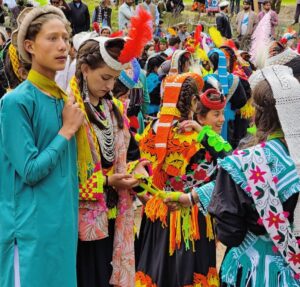Markhor, Pakistan’s national animal, is no easy target. Scaling near-vertical cliffs and leaping across rugged mountainsides, it tests every skill of even the most experienced hunters. Yet, in a carefully regulated programme in Gilgit-Baltistan and Khyber Pakhtunkhwa, hunting this spiral-horned marvel has a purpose: the revenue supports local communities, funds conservation, and promotes eco-tourism.
Recently, a single hunting permit for the Astor Markhor sold for $370,000 — the highest ever recorded in Pakistan. The sale, part of the trophy hunting programme in Gilgit-Baltistan, has drawn international attention to the region’s rugged landscapes and rich biodiversity.
The auction, held at the Forest, Parks and Wildlife Complex in Gilgit, brought together foreign hunters, local officials, and wildlife experts. For the 2025–26 season, 118 permits were offered: four for the Markhor, 100 for Himalayan ibex, and 14 for blue sheep. Officials emphasized that 80% of the revenue goes directly to local communities, funding conservation, eco-tourism, and regional development projects.
Also Read: Indus Blind Dolphin Conservation: KP Approves Rs50 Million Plan
A heritage under the horns
The Markhor is found across Gilgit-Baltistan, Chitral, Hunza, Wadi-e-Kailash, and parts of Balochistan. Its name, derived from Persian, means “snake eater,” though biologists stress it is a herbivore. Its twisted, spiraling horns, however, resemble snakes — a feature that likely inspired the legend.
Highly agile, the Markhor can leap great heights and navigate near-vertical cliffs, usually found at elevations between 600 and 3,500 metres. Conservation efforts over the last decade have helped Pakistan’s population grow from fewer than 2,500 in 2014 to an estimated 3,500–5,000 today. Yet globally, fewer than 6,000 adults remain, scattered across Afghanistan, India, Tajikistan, and Uzbekistan. Habitat destruction, illegal hunting, and climate change remain ongoing threats.
Also Read: Common leopard in Pakistan faces extinction threat amid growing human-wildlife conflict
A global icon and local lifeline
In May 2024, the United Nations declared 24 May as International Markhor Day, recognizing its ecological and cultural significance across Central and South Asia. The declaration urges international cooperation for its protection and highlights the role of the species in promoting sustainable development.
For local communities, the Markhor is not just a symbol of wildlife; it is a source of income and pride. Each permit sold supports livelihoods, funds education, and encourages eco-tourism. The trophy hunting programme, though controversial, demonstrates how conservation and economic development can coexist, offering a model for protecting endangered species while benefiting human populations.
While one foreign hunter walked away with a record-breaking permit, the Markhor continues to dominate the cliffs of Gilgit-Baltistan — a spiral-horned marvel that embodies Pakistan’s wild beauty, resilience, and the delicate balance between survival and human ambition.












